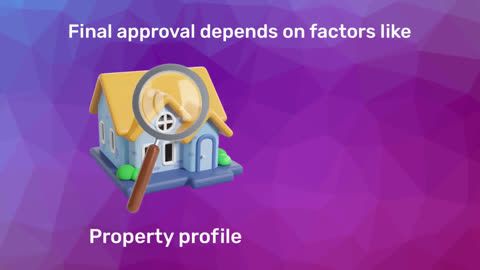This guide breaks down everything you need to know about COI, from its components to how it ties into smart financial decisions, like taking a home loan.
What is COI in income tax?
The Computation of Income (COI) refers to the process of calculating an individual's or entity's total taxable income for a financial year. This calculation considers all income sources, allowable deductions, exemptions, and applicable tax rates.Here are the key components of COI in income tax:
- Income from salaries
- Income from house property
- Profits and gains from business or profession
- Income from capital gains
- Income from other sources
Why is COI important?
The COI process ensures that taxes are calculated accurately and fairly. Here is why it matters:- Tax liability: It determines the exact amount of tax payable.
- Transparency: Helps taxpayers understand their financial obligations.
- Tax planning: Offers opportunities to optimise savings through deductions and exemptions.
Steps to calculate COI in income tax
To calculate income for tax purposes, start with your total income from all sources, then subtract any allowable deductions to arrive at your adjusted gross income (AGI). Finally, apply the relevant tax rates to your taxable income, which is AGI minus either the standard deduction or itemised deductions.Here are the steps to calculate COI in income tax:1. Determine total income: Include all sources of income such as:
- Salary income
- Income from house property
- Capital gains
- Income from other sources (for example, interest, dividends)
- Salary: Rs. 12,00,000
- Income from other sources: Rs. 20,000
- Total gross income: Rs. 12,20,000
- Section 80C: Investments in specified savings schemes (up to Rs. 1.5 lakh)
- Section 80D: Health insurance premiums
- Section 80TTA: Interest on savings accounts (up to Rs. 10,000)
- Section 80C: Rs. 1,50,000
- Section 80D: Rs. 12,000
- Total deductions: Rs. 1,62,000
- Gross income: Rs. 12,20,000
- Total deductions: Rs. 1,62,000
- Taxable income: Rs. 10,58,000
- Up to Rs. 3 lakh: Nil
- Rs. 3 lakh to Rs. 7 lakh: 5%
- Rs. 7 lakh to Rs. 10 lakh: 10%
- Rs. 10 lakh to Rs. 12 lakh: 15%
- Rs. 12 lakh to Rs. 15 lakh: 20%
- Above Rs. 15 lakh: 30%
- Tax on Rs. 3 lakh: Rs. 0
- Tax on Rs. 4 lakh (Rs. 3 lakh to Rs. 7 lakh): Rs. 20,000 (5%)
- Tax on Rs. 3 lakh (Rs. 7 lakh to Rs. 10 lakh): Rs. 30,000 (10%)
- Tax on Rs. 58,000 (Rs. 10 lakh to Rs. 10.58 lakh): Rs. 8,700 (15%)
- Total Tax: Rs. 58,700
For example:
- Total tax: Rs. 58,700
- Cess: Rs. 2,348 (4% of Rs. 58,700)
- Final tax payable: Rs. 61,048
COI and financial planning
Understanding COI helps taxpayers optimise their savings through smart investments. Tax-saving instruments like life insurance, ELSS, and home loans can reduce taxable income.And, if you have a home loan, you can claim deductions under:
- Section 80C: Up to Rs. 1.5 lakh on principal repayment.
- Section 24(b): Up to Rs. 2 lakh on interest repayment.
Explore Bajaj Housing Finance Home Loan
Whether you are buying your first home or planning to upgrade, Bajaj Housing Finance offers convenient home loan options. With competitive interest rates, flexible repayment terms, and minimal paperwork, you can take the first step toward financial freedom.Here are a few key benefits of choosing Bajaj Housing Finance Home Loan:
1. High loan amount: Secure funding up to Rs. 15 Crore* to turn your dream home into reality.
2. Low interest rates: Enjoy interest rates starting 7.45%* p.a, and EMIs as low as Rs. 684/lakh*.
3. Quick approval: Get approved within 48 Hours* of applying – sometimes even sooner.
4. Flexible repayment tenure: Choose a repayment term of up to 32 years for comfortable EMIs.
5. Simple application: Take advantage of doorstep document collection for a smooth process.
6. Balance transfer facility: Move your existing home loan and get a top-up loan with better terms.
Ready to simplify your taxes and achieve your homeownership goals? Bajaj Housing Finance Home Loans can help you plan better while saving more. Apply now and enjoy tax benefits along with financial freedom.




